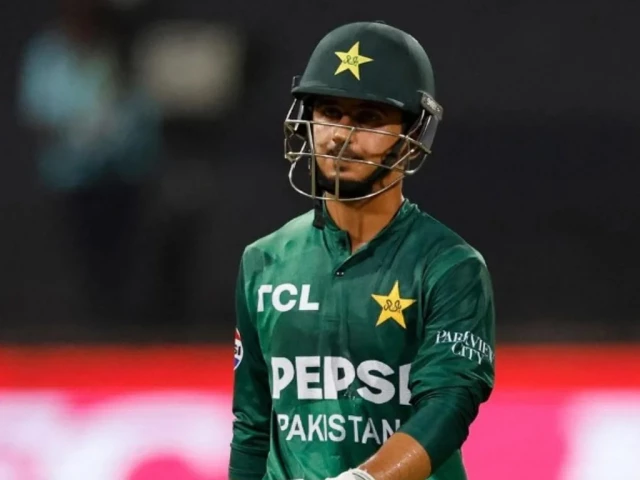KARACHI:
For years, Pakistan’s T20I fortunes revolved across the calm consistency of Mohammad Rizwan and the category of Babar Azam on the prime of the order. Collectively, they cast some of the dependable opening partnerships in fashionable T20I cricket, a duo that usually laid the inspiration for Pakistan’s victories. Now, with the workforce shifting away from the pair looking for a extra aggressive method, the consequences have gotten manifestly apparent.
From 2021 to 2023, Rizwan and Babar opened in 51 T20I innings collectively, amassing over 2,000 runs at a mean of 44.3 with a strike price of practically 130. No different pair in world cricket throughout that interval got here near their output. They shared 9 century stands and 12 fifty-run partnerships, a document that speaks volumes of their consistency.
Maybe their most memorable run got here within the 2021 T20 World Cup, when their unbeaten 152-run stand shocked India and set the tone for Pakistan’s marketing campaign. For a aspect typically accused of fragility on the prime, Rizwan and Babar weren’t simply openers – they had been a protect in opposition to collapse.
Quick ahead to 2025, and Pakistan’s opening mixture has shifted. Children like Saim Ayub, Sahibzada Farhan, and Mohammad Haris have been given alternatives to carry aptitude and intent to the highest order. Whereas the technique displays a want to modernize the T20 method, the dearth of stability is hurting Pakistan.
Within the final 10 T20Is, Pakistan’s new opening mixtures have averaged below 22 runs per stand, with just one fifty partnership. The distinction is stark in comparison with Rizwan and Babar’s period, the place a 40+ begin was nearly routine. The struggles are evident in matches in opposition to prime opposition, the place early wickets expose an inexperienced center order too quickly.
What Pakistan is Lacking
Babar’s function as an anchor and Rizwan’s means to rotate strike whereas accelerating later offered steadiness. Their sport won’t have matched the high-voltage aggression of Indian or English openers, but it surely introduced reliability. Crucially, their partnerships ensured Pakistan not often began in chaos.
Now, with inconsistent begins, the center order faces scoreboard stress, and bowlers now not benefit from the cushion of defendable totals. Towards India not too long ago, Pakistan’s openers fell cheaply, and the workforce limped to 127/9 – a complete that Rizwan and Babar might need doubled with a strong stand.
The problem for Pakistan is evident: balancing the aggression of the brand new breed with the confirmed solidity of their former stalwarts. Dropping each Rizwan and Babar concurrently has left a management vacuum on the prime. Whereas the intent is to evolve, the execution reveals that have and consistency nonetheless matter.
If Pakistan are to mount critical challenges in upcoming tournaments, they need to revisit their components – whether or not by reinstating one of many seasoned campaigners alongside a teenager or by redefining roles to make sure their openers can each survive and rating briskly.
As a result of proper now, the absence of Babar and Rizwan isn’t only a tactical shift – it’s a niche Pakistan is struggling to fill.

